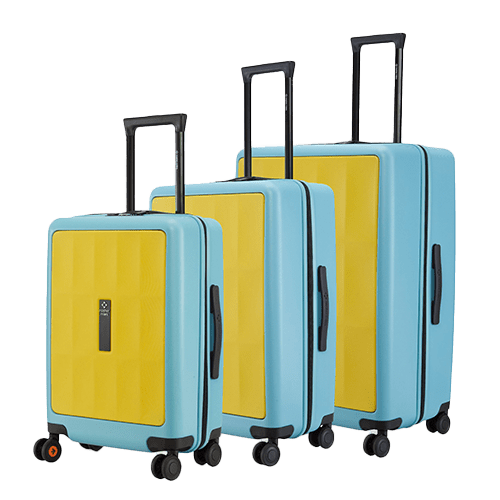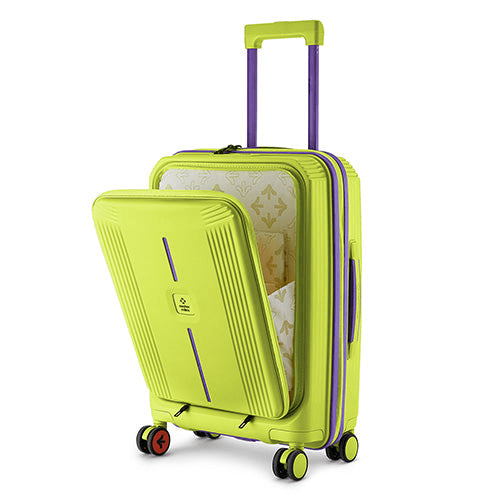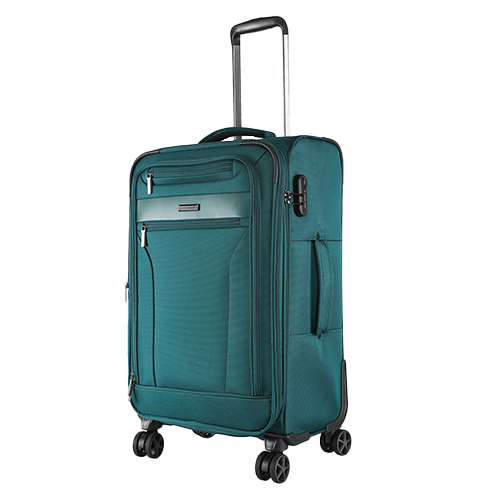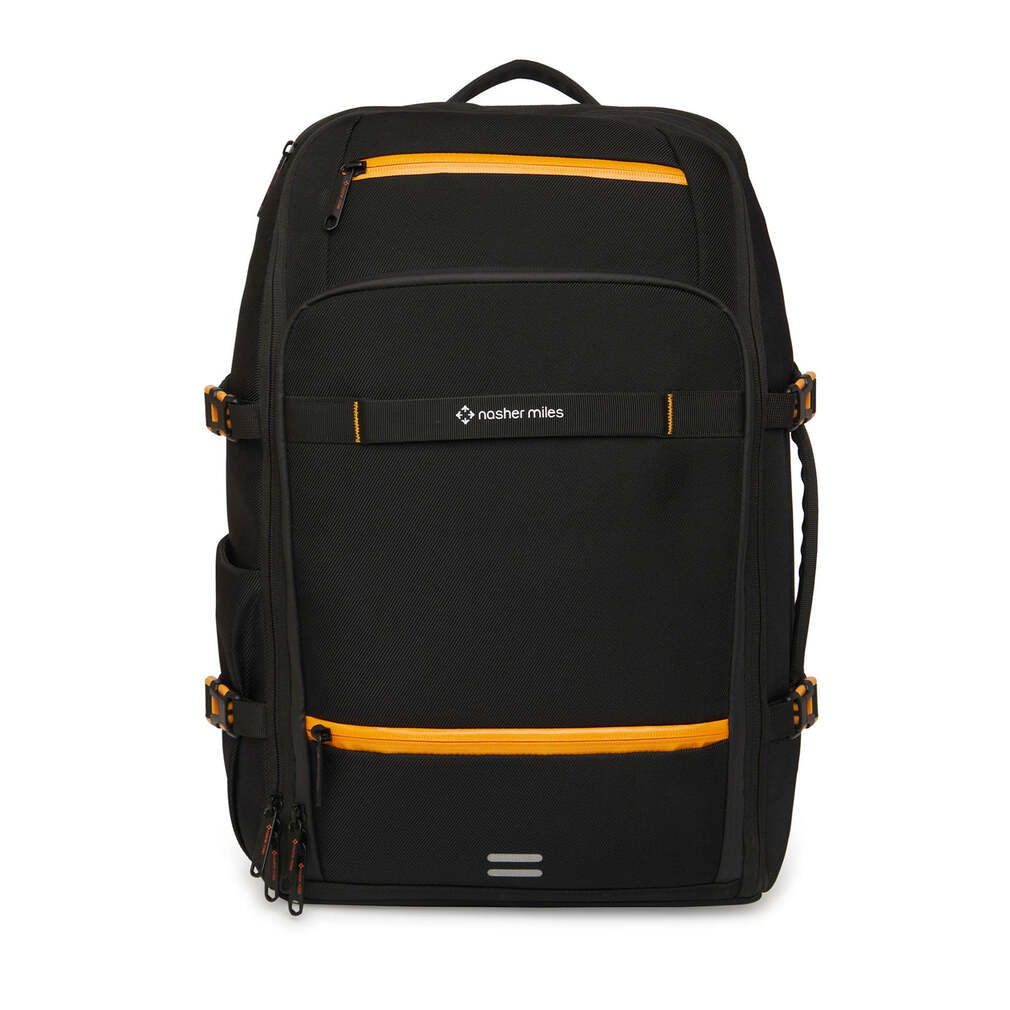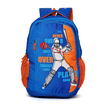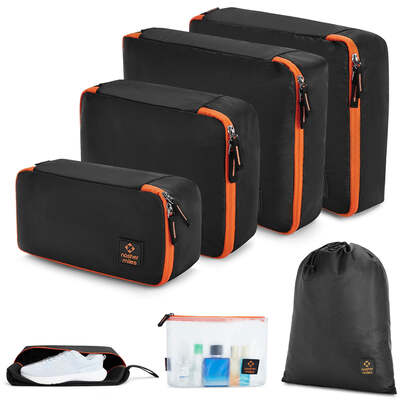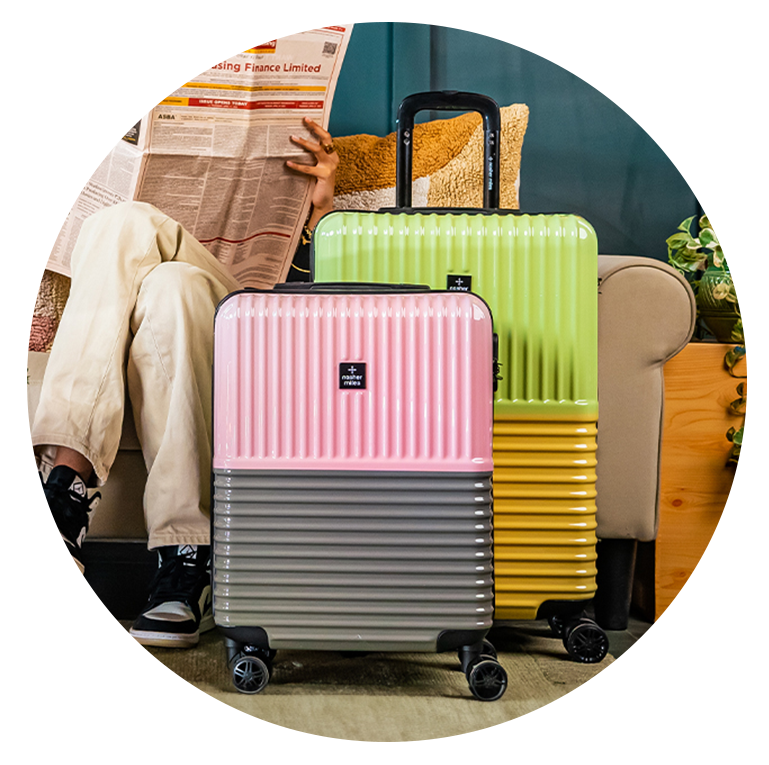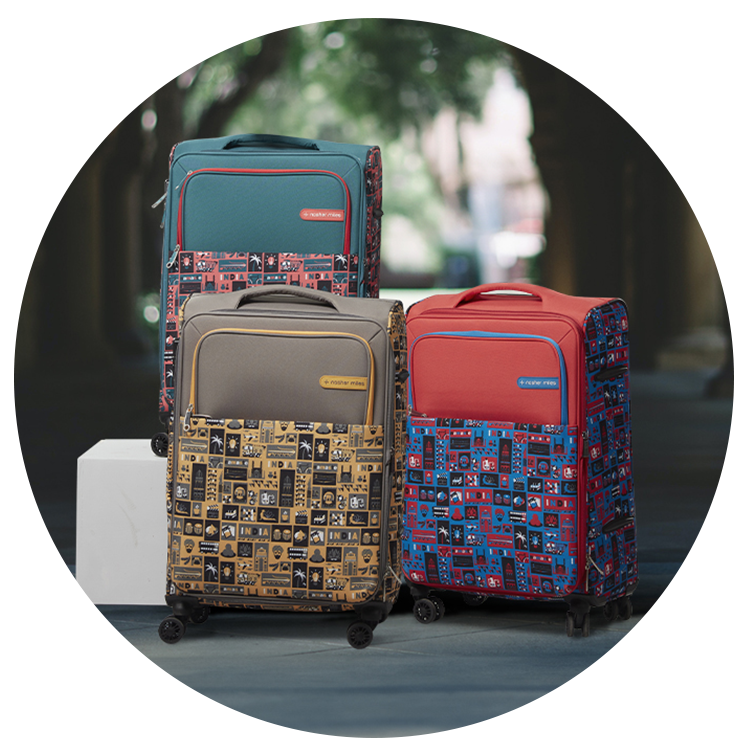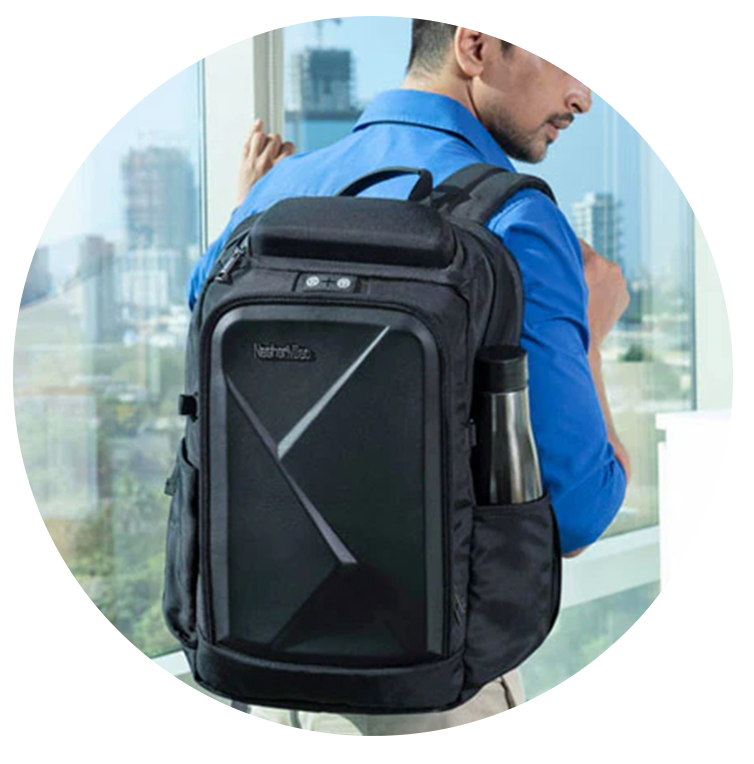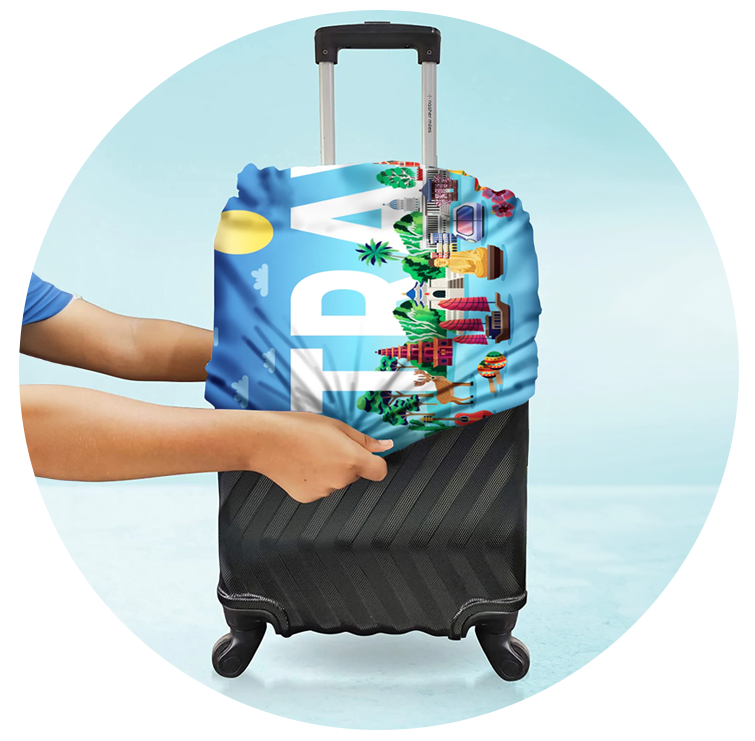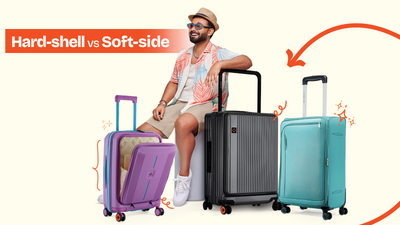Carry-On vs Check-In: Luggage Size Guide You Should Know Before Flying
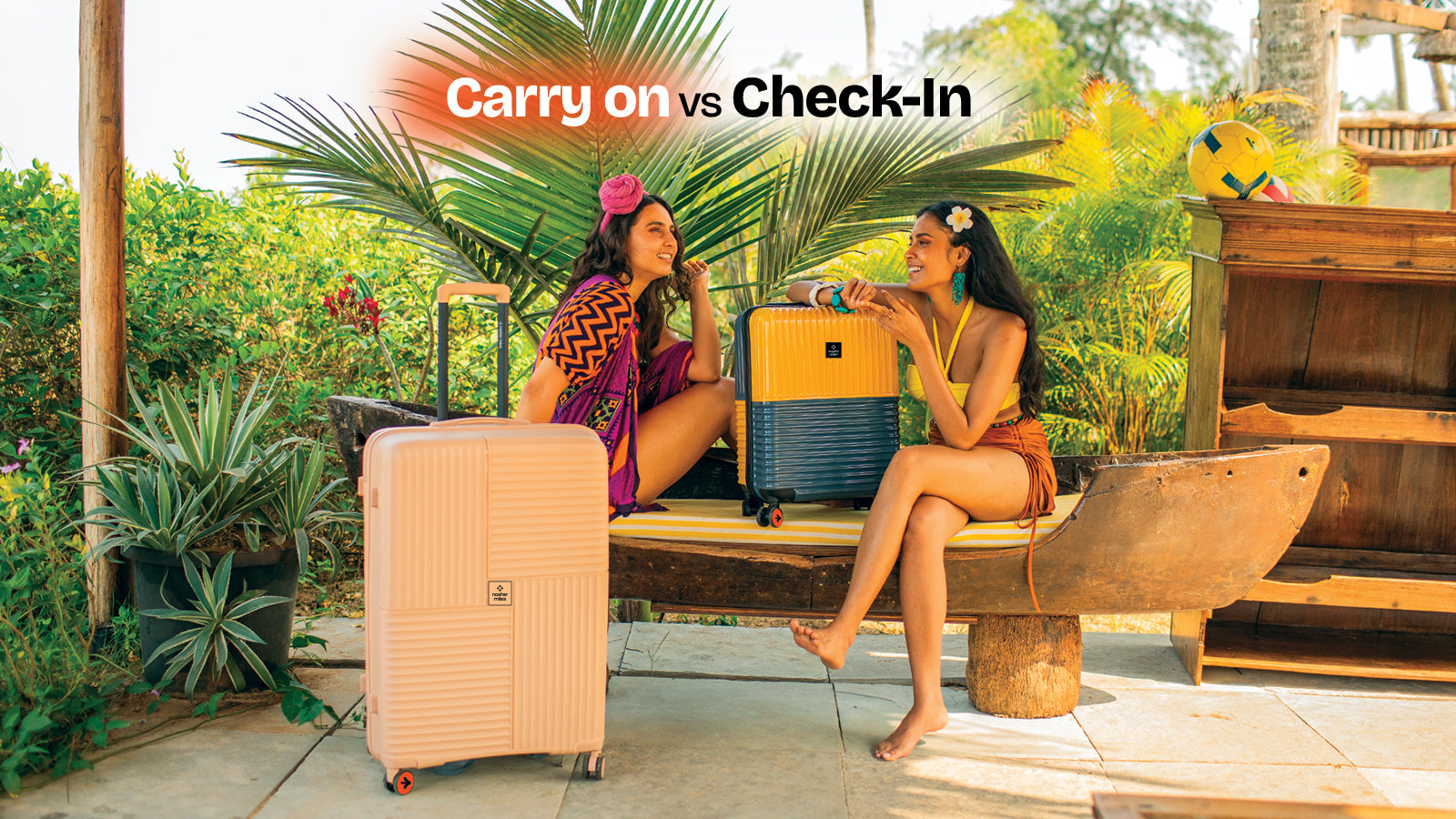
Travelling is liberating for both mind and body. But, every time you fly, deciding whether to carry a carry-on bag or a checked-in bag is a difficult decision to make. Well, not anymore. Packing can be easy if you know the ins and outs of your baggage options. Knowing and understanding the difference between carry-on and checked-in luggage makes all the difference and ensures a smooth journey. Whether you are a frequent flyer or a newbie, this blog will help you navigate the skies with ease. Most travellers that you see around you do not know the secrets of efficient packing and hence spend days planning on what to pack and what kind of luggage to carry. Stay tuned till the end and travel like a pro on your next adventure.
What Is Carry-On Luggage?
A carry-on luggage trolley bag is luggage that travellers can carry and store with them during the flight. Typically, carry-on luggage is designed for ease and convenience, offering travellers the convenience of keeping their essentials close during the flight. It is smaller in size and easily fits in the overhead compartment, making it accessible throughout the entire journey. Opt for our Oslo Carry-on luggage trolley bag, which offers a sleek look, TSA-approved locks, a spacious interior, and 360-degree spinner wheels. Now that you have a perfect carry-on luggage option at your fingertips let's examine the size, dimensions, and advantages that carry-on bags have to offer.
- Standard Carry-On Size Dimensions
Our carry-on luggage trolley bag measures 55 Cm x 36 Cm x 27 Cm, providing ample room to pack everything you need for your getaway. Designed for smooth travel, our carry-on luggage features a 100% polycarbonate hard shell to prevent damage to your belongings. Its spacious design fits comfortably in the overhead compartment and offers a 10 Kg capacity to make your travel hassle-free and efficient.
- Travel Luggage Size Chart: Typical Carry-On Measurements
A typical carry-on luggage size allowed by most airlines is 56 cm x 36 cm x 23 Cm. However, different airlines may have slightly different size restrictions. Does this mean you should have multiple carry-ons for different flights? Well, no!
Carry-on luggage trolley bags curated by Nasher Miles adhere to all standard size restrictions set by different airlines, allowing you to travel worry-free.
- Advantages of Carry-On Luggage
Carry-on luggage offers multiple advantages, including time-saving, reduced risk of loss, and the ability to access your belongings during the flight.
Let us take a look at these in detail.
- No Waiting for Baggage
Say no to waiting in long lines for your checked baggage. Passengers can quickly leave the airport upon arrival without having to wait in long lines for their baggage. This gives travellers more time to explore and more time with their loved ones.
- Quick Access
With all the necessities just above your head, you can easily retrieve your items from your carry-on, whether it be headphones, a power bank, or your favourite book. Entertainment should not stop!
- Reduced Risk of Damage
Since your carry-on trolley bag stays with you at all times, there is a lower risk of it being lost or damaged in transit. Many times, airlines mishandle luggage, and incidents have been reported of damage. Well, no more with a carry-on bag!
What Is Check-In Luggage?
A check-in bag refers to luggage that is handed over to the airline during the check-in desk process at the airport. These bags are usually larger than carry-on luggage and hold belongings that travellers don't need immediately during the flight. These bags are often stowed in the cargo hold. However, carrying a check in a bag comes with some restrictions, like size, weight restrictions, and restrictions on certain items. If you are carrying a checked-in bag with you, ensure you review the airline's policies before packing.
- Standard Check-In Luggage Size Dimensions
Standard Check-in luggage typically has dimensions of 61 cm x 41 cm x 25 Cm, which is considered a medium-sized check-in bag. However, some airlines allow slightly larger bags, such as a 71 cm x 46 cm x 30 Cm large check-in bag.
- Suitcase Size Chart: Common Check-In Bag Sizes
Common check-in bags typically range from medium to extra large and differ in dimensions. Let us look at this in detail.
|
Bag Type |
Dimensions |
Best Suited For |
|
Medium |
61 Cm X 41 Cm X 25 Cm |
Weekend getaway |
|
Large |
71 Cm X 46 Cm X 30 Cm |
Longer trips or a lot of gears |
|
Extra large |
81 Cm X 51 Cm X 36 Cm |
Extended trips |
- Weight and Size Restrictions for Check-In Bags
The allowed weight for check-in bags varies by airline and flight type. Generally, weight limits range from 15 Kg to 32 Kg per piece, and the size limits are typically around 158 Cm in total dimensions (length + breadth + height). For domestic travel, certain airlines allow 15 Kg with a size of 158 Cm, while for international travel, the allowed weight can be 30 Kg with a maximum size of 158 Cm.
Benefits of Checking In Luggage
- Increased Capacity
Checked-in bags allow you to pack more items compared to carry-on bags. If you can't decide between dresses, carry them all!
-
Airport Convenience
You don't have to worry about manoeuvring through security with heavy bags, which can be an added stress, especially with multiple connections.
- Oversized Items
Check-in luggage is perfect for transporting items that exceed the carry-on limit—no more compromise on musical instruments, sports equipment, or oversized travel accessories.
Carry-On vs Check-In: Key Differences
- Size and Weight Limits Based on Travel Bag Size Chart
|
Luggage Type |
Size |
Weight |
Storage |
Access |
|
Carry On Luggage |
56 Cm X 36 Cm X 23 Cm (varies from airline to airline) |
7-10 Kgs |
Stored in the overhead compartment |
Can access during flight |
|
Check in Luggage |
61 Cm X 41 Cm X 25 Cm (varies by bag type) |
20-23 Kgs |
Stored in the plane’s cargo hold |
Cannot access during flight |
- Convenience and Time Saved
Carry On Luggage
-
Convenience: Easy access to belongings during the flight.
-
Time-Saving: Saves hours of baggage check-in and claim time.
Check-in Luggage
-
Convenience: Convenient for packing extra or oversized luggage.
-
Time Saving: Saves time for connecting flights.
Cost Implications and Fees
Carry On Luggage
-
Cost: Typically free for one piece per person, but may have extra fees for oversized bags.
-
Fees: Potential fees for oversized or overweight carry-ons and for additional personal items.
Check-in Luggage
-
Cost: May incur additional fees for domestic flights, especially with budget airlines.
-
Fees: Additional fees may apply for checked bags or bags exceeding the standard weight limit or for bags that are overweight.
Security and Handling Considerations
Carry-on Luggage
-
Security: Screened by X-ray equipment at security checkpoints.
-
Handling Considerations: Must be packed carefully to fit in the overhead bin or under the seat.
Check-in Luggage
-
Security: Screened before the flight by the TSA or similar agencies
-
Handling Considerations: Should be packed securely and tagged with a baggage tag.
How to Choose the Right Luggage Size for Your Trip
- Trip Duration and Packing Needs
To choose the right luggage for your next adventure, consider your trip duration, what you need to pack, and the airline's restrictions on carry-on and checked-in luggage. For short trips, such as a weekend getaway, a carry-on bag might be sufficient, while for longer trips, a medium or large checked bag will be helpful.
- International Luggage Size Chart: What to Know for Global Travel
For your international adventure, consider the duration, destination, and purpose of your trip. A carry-on is best suited for short business trips, while medium-sized check-in bags are ideal for week-long getaways, and large check-in bags are perfect for longer trips with multiple people.
- Travel Purpose: Business vs Leisure
For short business trips, a carry-on bag may suffice, while longer trips involving multiple destinations may require a medium or large checked bag.
However, if you are travelling for leisure, make sure to pack light for a smooth journey.
- Personal Comfort and Mobility
For personal comfort and mobility, consider the length of yoru trip, type of travel and comfort preferences. A small carry-on is ideal for a weekend trip, while a medium or large checked bag is better suited for more extended vacations.
Tips for Packing Efficiently in Carry-On and Check-In Bags
- Maximize Carry-On Space According to Travel Luggage Size Chart
To maximize packing efficiency in carry-on bags, start by rolling clothes to save space and reduce wrinkles. Packing cubes are also efficient in packing and keeping clothes safe and spotless. One packing hack that most frequent travellers do is to wear bulky clothing, such as jeans and jackets, on the plane to save space.
- Avoid Overweight Fees on Check-In Bags
In order to pack effectively and avoid the overweight fee, pack lightweight luggage. Wear your heavy clothes on the plane, buy toiletries at your destination, and ensure you weigh your luggage set before departure to stay within the limits.
- Use Packing Cubes and Organizers
Packing cubes and organizers play a crucial role in packing efficiently and maximising space—separate clothing items into separate cubes to prevent wrinkles.
- Essentials to Keep in Carry-On
Keep your essentials in the carry-on, such as documents, medications, electronics, a change of clothes, snacks, and water.
Airlines’ Luggage Size Chart Overview
Travel Luggage Size Chart: Comparison of Major Airlines’ Carry-On Limits
|
Airline |
Maximum Size |
Maximum Weight |
|
Air India |
115 Cm |
7 Kg |
|
Indigo |
115 Cm |
7 Kg |
|
Spicejet |
108 Cm |
7 Kg |
|
Vistara |
115 Cm |
7 Kg |
International Luggage Size Chart: Check-In Size and Weight Restrictions
|
Airline |
Maximum Size |
Maximum Weight |
|
American Airlines |
158 Cm |
23 Kg |
|
Emirates |
158 Cm |
20-50 Kg |
|
British Airways |
208 Cm |
23-32 Kg |
|
Air france |
158 Cm |
23-32 Kg |
|
Luftansa |
158 Cm |
23-32 Kg |
How to Check Your Airline’s Specific Rules
For more information on the airline's specific baggage rules, it is best to consult the airline's official website or baggage policy page.
Understanding the airline’s baggage rules helps you pack accordingly and avoid overhead fees.
Frequently Asked Questions
1) What happens if my checked luggage exceeds the size limit by just an inch?
If your checked luggage exceeds the airline's size limit by just an inch, you will likely be charged an additional fee for oversized baggage. But if you are a frequent flyer with the same airline, they are more likely to waive the fee.
2) Can a 24-inch suitcase be used as carry-on luggage?
No, a 24-inch suitcase is generally not considered a carry-on.
3) What are the standard rules and restrictions for check-in baggage?
Standard rules for check-in baggage include weight limits (typically 15-23 kg per bag), size restrictions (total dimensions exceeding 273 Cm, and prohibited items. Many airlines also have restrictions on the number of pieces allowed, with some offering allowances based on ticket class.
4) Which items are prohibited from being included in checked luggage?
Dangerous Goods
-
Explosives: Ammunition, blasting caps, detonators, fuses, explosive devices, replica explosives, fireworks
-
Flammable Substances: Lighter fluid, paint thinners, gasoline, diesel, other flammable liquids
-
Gases: Compressed gases, liquefied gases, refrigerated liquefied gases, poisonous gases (e.g. butane, oxygen, liquid nitrogen)
Weapons and Disabling Devices
-
Firearms and ammunition
-
Other weapons (knives, stun guns, etc.)
-
Mace, pepper spray, tasers, or any incapacitating substances
Electronics and Batteries
-
Power banks (especially from India)
-
Devices with lithium batteries (e.g. laptops, smartphones)



